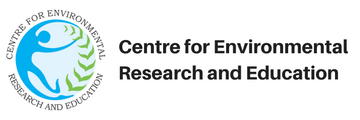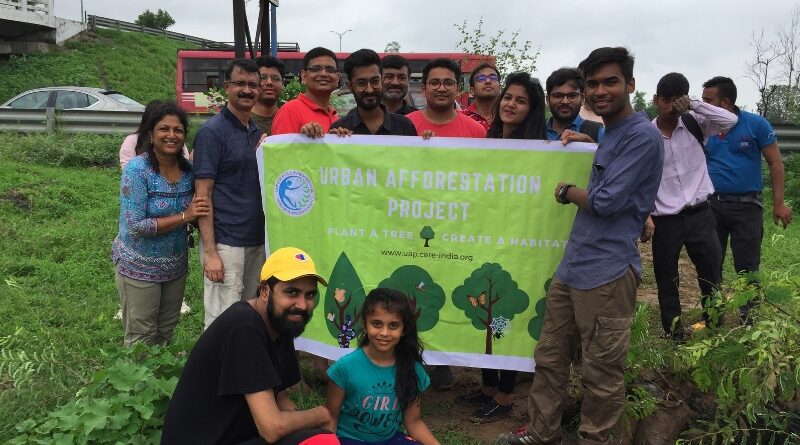Greening our Concrete Jungles
India is rapidly moving towards urbanization and the country’s urban population has grown from 29.91% in 2007 to 33.54% in 2017 according to the ‘World Development Indicators Survey’ conducted by World Bank. India is currently confronted with the emergence of more than 50 cities having a million-plus population, and by 2030, over 40% of the country’s population will be living in cities. Today, Delhi holds the position of the world’s second most populated city with 25.7 million residents, while Mumbai comes in 5th with just over 21 million people.
This rapid development and widespread urban sprawl have drastically depleted green cover leading to habitat loss, pollution and significantly impacting the quality of life of urban dwellers. Many Indian cities fall well below the United Nations recommended standard of 9 m2 of green space per person, including Mumbai (1.24 m2/person) and Chennai (0.81 m2/person). Even Bangalore, known as the ‘Garden City’ performs poorly with only 1.9 m2 of green space per person.
Rapidly declining green spaces and rampant urbanisation has also made cities more vulnerable to climate change. Increasing concentrations of greenhouse gases, particularly carbon dioxide (CO2), are leading to an increase in the average surface temperature of our planet – which in turn results in rising sea levels, a rising frequency of severe weather events, droughts, floods, forest fires, and declining biodiversity.
Urban Afforestation

Urban Afforestation offers a unique solution to safeguard our planet, especially our choked cities. Urban trees have been known to significantly improve air quality by absorbing gaseous pollutants (ozone, nitrogen oxides) through leaf surfaces and intercepting particulate matter in the ambient air (e.g., dust, ash, dirt and smoke). Street trees in Bangalore for example, have been observed to reduce levels of suspended particulate matter and contributed to 65% reduction in SO2 levels.
Trees also help in managing the local climate, for instance, transpiration of water through the leaves of a tree cools the local air temperature. A single tree can provide an air-conditioning efficiency of 20 kW by transpiring about 400 litres of water daily. Trees also provide cooling by providing shade, which lessens the opportunities for urban surfaces to absorb and radiate heat into the local area thereby helping to reduce the Urban Heat Effect.
Trees also provide several social and economic benefits such as promoting urban farming, beautification and enhanced aesthetics, privacy, shade (which increases human comfort), and the creation of a sense of place and well-being among urbanites. Trees have also been credited with improving human health and reducing noise pollution.
As climate change continues to escalate, trees play an incredibly important role as ‘sinks’ for CO2 emissions. Through the process of photosynthesis, trees sequester carbon dioxide and store it in their trunks, branches, root systems, and leaves. A single mature tree can absorb about 20 kg of CO2 a year, which equals the emissions arising from driving over 80 km in an average passenger car.
Additionally, it is important to grow native indigenous trees. Native trees provide important habitats for several different species of urban fauna that also resides in our cities. They act as a source of food and shelter for important pollinating species such as bats and bees and support populations of reptiles and amphibians. Today, it is vital to convert pockets of fallow land or barren spaces across the country into biodiversity islands to help promote the growth and conservation of local flora and fauna.
Urban Afforestation Program (UAP)

The Centre for Environmental Research and Education (CERE) has been working in the space of urban afforestation for the past many years in a quest to green our concrete jungles through its initiative called the Urban Afforestation Program (UAP). This program addresses the critical need of afforestation in cities by creating a platform through which companies and private citizens can facilitate the development of green spaces within their urban community. Through this program companies and organisations can further reduce their carbon footprint by offsetting their emissions while having a positive impact on the welfare of local communities, flora and fauna.
UAP was launched in early 2015 and since then has planted over 42,421 trees within cities across India such as Mumbai, New Delhi, Pune, Nasik, Gurgaon and others, having sourced 61 different native tree species such as Laburnum, Sita Ashok, Jambul, Teak, Badam, Neem, Ber, Coral Tree, Bael, Rudraksh, Sandalwood and many others.

The aim of Urban Afforestation Program is to plant native trees in urban and peri-urban areas to (i) improve the quality of life in cities, (ii) create a natural habitat for local fauna, (iii) improve air quality, (iv) help companies offset a portion of their carbon footprint, and (v) create opportunities for livelihood development. Under the UAP project, CERE only plants native India tree species that are at least 2-3 years old to ensure a high survival rate of 92.5%. Every plantation is geotagged, monitored over 3 years and carbon sequestration potential calculated over a period of 15 years.
The unique aspect of UAP project is that it facilitates the engagement of two distinct groups (primary stakeholders), namely
- urban landowners across the country such as educational campuses, residential colonies, defence sites, etc who have the space to grow trees and
- concerned organisations or individuals who wish to and have financial resources to support plantations but lack the space to do so.
Biodiversity Island Projects

CERE is also attempting to reform the world of horticulture where manicured gardens must be replaced by wild and indigenous Islands of Biodiversity that can be theme based such as butterfly gardens, medicinal gardens, etc having a variety of native plants which would attract butterflies, birds and other animal species. Keeping this in mind, it has created a prototype in Pune and Alibaug.
These Biodiversity Islands have been developed with a whole-hearted purpose of spreading awareness on benefits of biodiversity islands and improving the local environment. Today both gardens host several nectar plants to attract butterflies, flowering plants to refresh our olfactory senses and edible and medicinal plants such as Lemon Grass, Turmeric, Tulsi amongst others for consumption.
On visiting the garden one can often spot butterflies such as the Common Grass Yellow, Tailed Jay, Common Mormon, and Common Sailor amongst others along with birds such as Sunbird and Bulbul.
UAP and Biodiversity Island projects, strive to tackle the problems associated with modern-day urbanisation by bringing local authorities, companies, and citizens together to promote afforestation and environmental stewardship as an integral aspect of city planning and development.

